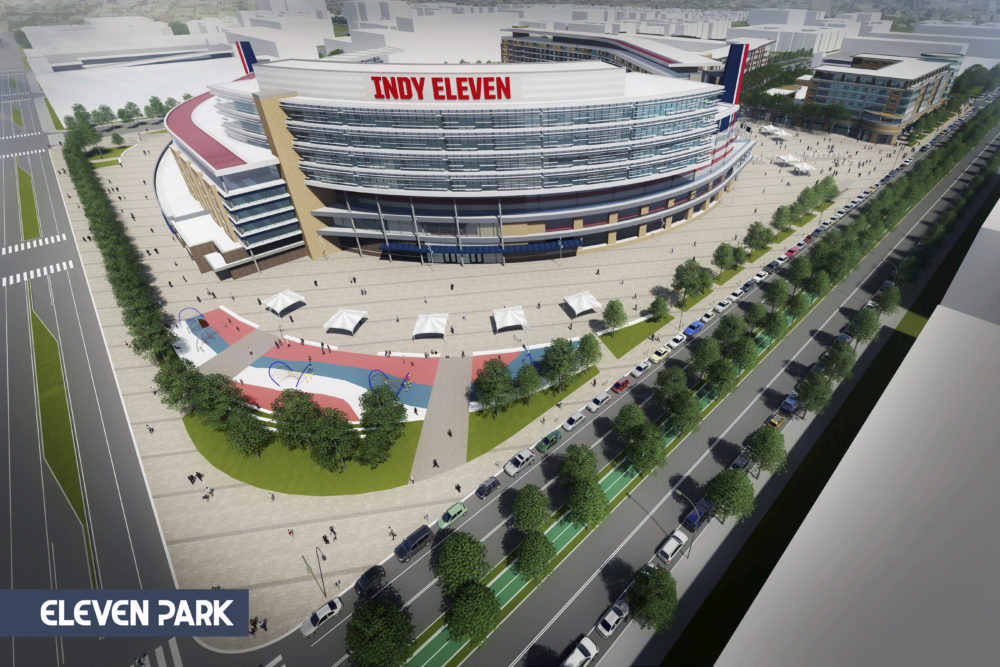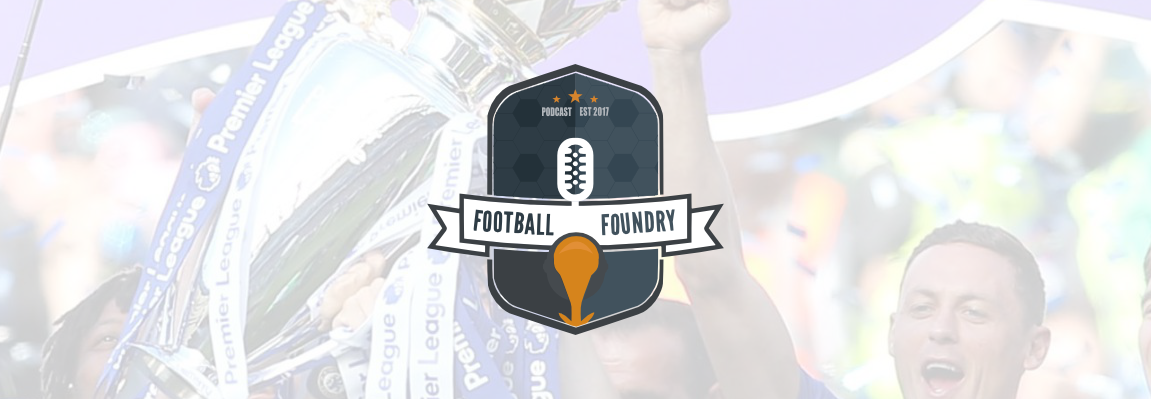Could Indy Eleven join MLS? Maybe. Sure.
Will we see Indy Eleven make the jump to MLS?
The news broke from the headquarters of Major League Soccer that beyond Nashville, Miami, and Austin, that the top flight in American Soccer would have 30 teams by 2021/2022. This news broke with much excitement as it kept the door open for teams outside of Sacramento and St. Louis, who are both front runners to join the league next, to keep vying for a spot. Whether it was a public relations grab or if the league has thoughts and ideas to keep the movement going – Major League Soccer has positioned itself to continue to grow and dominate the sport of soccer in the United States.
MLS to Indy?
The announcement also looms over the Circle City as the Indiana General Assembly moves Senate Bill 7, which among many other things provides the city of Indianapolis with the ability to create a tax district to fund a soccer-specific stadium to be used assumingly by Indy Eleven. There were many questions involving SB7’s soccer aspects as early as the Senate Appropriations committee where Senator Mishler, the author of the bill and at times enemy of the soccer aspects, inserted what was dubbed an “MLS tag” which would require any professional team to be a member of Major League Soccer in order to qualify for the stadium to be built.
The Eleventh Hour Bid: What’s changed?
On January 31st, 2017, Indy Eleven submitted an application to the office of Major League Soccer to join the league. While the contents of the exact bid were relatively unknown, the public aspects that many knew would be in their pitch were also generally unknown. At the time, a discussion had been occurring but Indy Eleven were without a stadium to call their own. Not to mention, in addition to having no soccer-specific stadium at the time of their initial bid – Indy Eleven also played in the now “on hiatus” North American Soccer League.
Since 2017, Indy Eleven has moved venues, moved leagues, and in the busy sports market of Indiana and Indianapolis, began to move mountains. Going from the folksy home in Michael A. Carroll Stadium on the campus of IUPUI to the industrial and modern home of the NFL’s Indianapolis Colts Lucas Oil Stadium has steadily shown not only a bump in attendance, but a new baseline of numbers as the team is averaging between 10k-11k per game. They began the 2019 season with capping out at 20,000 plus in the stands while not having to bank on a rivalry opponent like FC Cincinnati who the team played in 2018 to open up the home season.
For Indy Eleven, this growth since their initial bid in 2017 has watched them go from the viral rise they had in a short period of time to slowly grow into a stable and mature club.
Location
One of the biggest things comparing 2017’s bid to the theoretical 2019 bid is that, while it was easy to say it, the way the current bill is written you can all but confirm that a stadium for Indy Eleven will be inside of the I-465 circle and likely close to downtown Indianapolis. This aspect is extremely important as MLS values not only soccer-specific stadiums but locations near or in downtown. Indy Eleven has yet to announce the location for Eleven Park, assumingly waiting for the bill to pass to begin the discussion with the city.
One location, which would be ideal in my opinion, is the former Valspar factory headquarters.
Per IBJ:
The city official said that also under consideration is a site just south of Lucas Oil Stadium that’s bounded by McCarty Street to the south, Merrill Street to the north, West Street to the east and Kentucky Avenue to the west.
Indiana Business Journal has additional locations being considered, but this location in particular ticks a lot of boxes. It’s downtown, relatively centrally located.
One of the biggest benefits of this location is how close it is to Lucas Oil Stadium. Indianapolis is a world-renowned sports city that has hosted a Super Bowl, numerous conventions, and numerous college championships including the Men’s and Women’s Final Fours. One of the compliments the city receives is how easily walkable these venues are for folks. The Valspar location would fit that bill, keeping in line with the “walkable” venue mold.
Attendance
Since their first season as a member of the North American Soccer League, Indy Eleven have been a steadfast trendsetter on lower division attendance in North America:
(Michael A. Carroll Stadium) 2014 10,478
2015 10,272
2016 8,801
2017 8,395
(Lucas Oil Stadium) 2018 10,163
Attendance has slowly gone up since the 2017 bid. 2019’s home opener topped 20,000 which was a new club record. While the attendance needs to still grow, Indy Eleven has proven that following their move to Lucas Oil Stadium that the venue in which they play in is just as, if not more important, than the league they play in. Unfortunately, while Lucas Oil Stadium gives a center stage for Indiana’s team the facility, the multi-purpose aspect of it doesn’t allow for proper set up for soccer games. Short-term, it is a great solution, but the push and motivation for a new and permanent home would give Indy Eleven time to grow inside of a stadium designed for soccer, not a football stadium designed to host anything but other sporting events.
Owners
Major League Soccer makes no bones about it. With the newest expansion sides being required to pay 200 million dollars to join, MLS values owners with big pockets. 2019 saw Indy Eleven and more importantly, Ersal Ozdemir kick the doors open and allow for people to “buy in” to the team.
The ownership group additions include:
-
Brian Bauer, President, IU Health Fort Wayne, Fort Wayne, Ind.
-
Don Gottwald, COO and Chief Strategy Officer, KAR Auction Services, Inc., Carmel, Ind.
-
Shane Hageman, President, Hageman Group, Carmel, Ind., Indianapolis, Ind., Remington, Ind.
-
Jeffrey A. Laborsky, President and CEO, Heritage Environmental Services, Indianapolis, Ind.
-
Fred Merritt, President, LFM Investments, Inc., Fort Wayne, Ind., Carmel, Ind.
-
Quinn Ricker, President and CEO, Ricker Oil Company, Anderson, Ind.
-
Chris Traylor, Co-President, Traylor Bros., Inc & Representative of Traylor Family Capital, Evansville, Ind.
The exact amount that might be invested from these owners is unknown, but at least one box has been checked for Major League Soccer as these owners all have local ties.
Nate Beckman of the Columbus Crew website Massive Report in January researched local vs. non-local ownership. His findings were interesting:
So, what did I learn? From 2013-2017:
- Urban core stadiums’ attendance was on average 15-20 percent higher than non-urban core stadiums.
- Local owners’ attendance was 23 percent higher than non-local owners’.
- On field success is not obviously impacted by local or non-local ownership.
MLS tends to skew towards successful and long-term teams having local ties and owners. Indy Eleven have made it abundantly clear from 2017 that expansion fees would come from that ownership group rather any public funds. Whether that might trickle down to future deals the team would attempt to do with the city and state is unclear, but that’s truly unforeseeable in the short term.
Midwest is crowded
One of the larger issues facing any bid that Indy Eleven might make toward MLS stems from their location. Chicago Fire are possibly looking to move to the city and rebrand. Columbus Crew, FC Cincinnati, and next year, Nashville have begun to crowd the once sought after Midwestern market for soccer. Whether they would look at that or not, many of the current owners in the Midwest could make a strong argument that the fans could be split thinner. Places like Vegas, Phoenix, and even Detroit might be easier to sell simply for that reason.
Indy Eleven’s chance and the outlook
When you look at 2017 vs 2019 bids for Major League Soccer by Indy Eleven, you are almost looking at completely different teams. 2017 Indy Eleven was successful but looking for an out and help to not only get to a new venue as they had hit the glass ceiling with Carroll Stadium, but also a team looking for a way out of the NASL as NASL began their legal proceedings and eventual hiatus with US Soccer.
2019 Indy Eleven has hit new heights and new levels many weren’t sure they could reach. With Lucas Oil Stadium, while not the permanent home they desired, Indy Eleven has gained a strong venue for their games. The expansion of owners has allowed for Ozdemir to minimize his losses and stabilize the future of the team.
The only benefit for Indy Eleven is that with the announcement of additional expansion teams, their debate at the Statehouse over the future of their team is made even easier by being able to express that MLS is open to more teams, which for lawmakers who aren’t connected to sports or soccer, was a debate they had following the removal of the MLS tag.
The biggest difference between the actual and theoretical bids of 2017 and 2019 is that in 2017 you could make a pretty strong argument that Indy Eleven needed MLS or at least the bid to join MLS. For Indy Eleven in 2019, there isn’t a need to join Major League Soccer. There is a want, but Indy Eleven no longer needs to join MLS as it’s found the stability and growth opportunity it desired with USL Championship.





